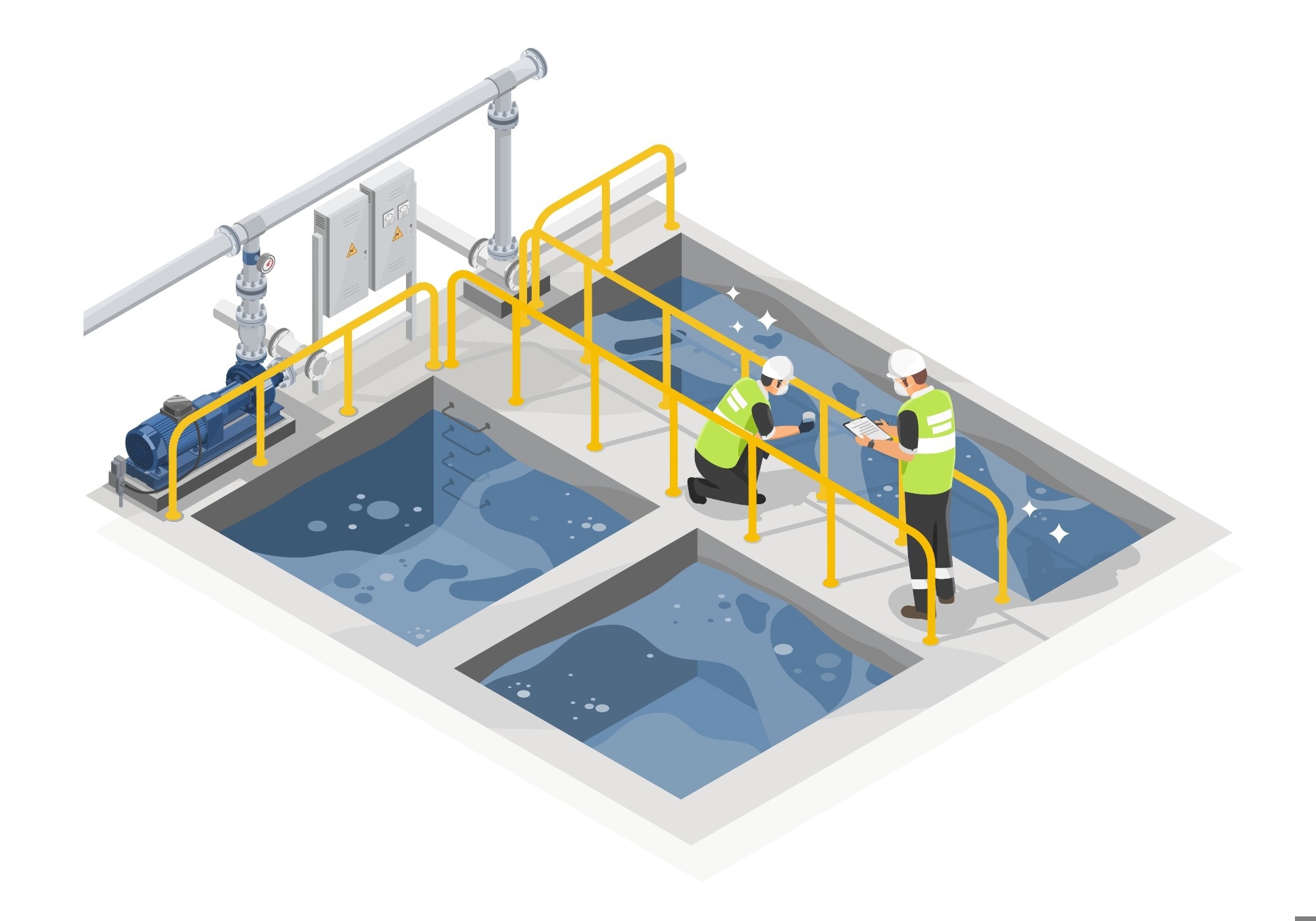In a recent article published in Scientific Reports, researchers present the development and characterization of a novel silica/klucel nanocomposite for the efficient removal of lead ions from wastewater.

Image Credit: Allahfoto/Shutterstock.com
The research explores the adsorption capacity, kinetics, and mechanisms of the nanocomposite, alongside its stability and reusability, contributing to sustainable wastewater treatment solutions that are both efficient and environmentally viable.
Background
Heavy metals, including lead, are commonly found in industrial effluents, necessitating effective treatment methods to mitigate their environmental impact. Traditional methods for heavy metal removal, such as chemical precipitation and ion exchange, often have limitations, including high costs and secondary waste generation.
In recent years, adsorption has emerged as a promising alternative due to its simplicity, cost-effectiveness, and ability to achieve high removal efficiencies. Nanocomposites, particularly those combining silica nanoparticles with biopolymers like klucel, offer enhanced adsorption properties due to their high surface area and tunable characteristics.
This study builds on previous research by synthesizing a silica/klucel nanocomposite and evaluating its potential as an adsorbent for lead ion removal from wastewater.
The Current Study
The synthesis of the silica/klucel nanocomposite followed a two-step process: silica nanoparticles were first produced using a sol-gel method involving tetraethyl orthosilicate (TEOS), hydrochloric acid, and distilled water, followed by heating and drying steps.
The klucel polymer was then dissolved in deionized water, and the silica nanoparticles were gradually added to this solution under continuous stirring to ensure uniform dispersion. The resulting nanocomposite was characterized using X-ray diffraction (XRD), scanning electron microscopy (SEM), Fourier-transform infrared spectroscopy (FTIR), and Brunauer-Emmett-Teller (BET) analysis to assess its structural, morphological, and physicochemical properties.
Batch adsorption experiments were conducted to evaluate the nanocomposite's capacity for lead ion removal. The effects of various parameters, such as pH, initial lead concentration, temperature, and adsorbent dosage, were systematically investigated.
Adsorption kinetics were analyzed using pseudo-first-order and pseudo-second-order models, while isotherm studies were performed using Langmuir and Freundlich models to determine the adsorption mechanism. Additionally, the regeneration and reusability of the nanocomposite were assessed through multiple adsorption-desorption cycles, employing different eluting agents to recover the adsorbed lead ions.
Results and Discussion
Characterization confirmed the effective incorporation of silica nanoparticles into the klucel matrix, as distinct peaks in FTIR spectra aligned with each component. Batch adsorption experiments indicated rapid adsorption kinetics, with equilibrium reached in a short time. The adsorption process was found to follow pseudo-second-order kinetics, indicating that chemisorption was the primary mechanism governing lead ion removal.
The adsorption isotherm studies indicated that the Langmuir model accurately fit the experimental data, suggesting that lead ions were adsorbed as a monolayer on the nanocomposite surface. The maximum adsorption capacity was affected by factors such as solution pH, with optimal conditions identified for lead ion removal.
The study also demonstrated the effectiveness of various regeneration methods, with both acidic and alkaline solutions achieving desorption efficiencies above 98 %. Reusability tests showed that the nanocomposite maintained high removal efficiency across multiple cycles, though a gradual decline was observed due to saturation of active sites on the adsorbent.
Environmental assessments revealed that the silica/klucel nanocomposite not only effectively removed lead ions but also generated minimal secondary waste, making it a sustainable option for wastewater treatment. Comparative analyses with other adsorbents in the literature demonstrated that the nanocomposite exhibited competitive adsorption capacities and superior reusability, reinforcing its potential as a viable solution for mitigating lead contamination in industrial effluents.
Conclusion
This study highlights the potential of silica/klucel nanocomposites as effective, eco-friendly adsorbents for lead ion removal from wastewater. The successful synthesis and characterization of the nanocomposite, combined with its high adsorption capacity, rapid kinetics, and stability, support its application in wastewater treatment.
The research advances adsorption technologies and emphasizes sustainable solutions for heavy metal mitigation. Future work should focus on refining synthesis protocols, investigating advanced regeneration techniques, and scaling up the application of the nanocomposite to maximize its effectiveness in industrial contexts.
By addressing the challenges associated with heavy metal pollution, this study paves the way for safer industrial practices and a healthier environment.
More from AZoNano: Advanced Nanocatalysts in Wastewater Treatment
Journal Reference
El-Shafey SE., et al. (2024). Silica/klucel nanocomposite as promising durable adsorbent for lead removal from industrial effluents. Scientific Reports 14, 26095. DOI: 10.1038/s41598-024-74680-2, https://www.nature.com/articles/s41598-024-74680-2